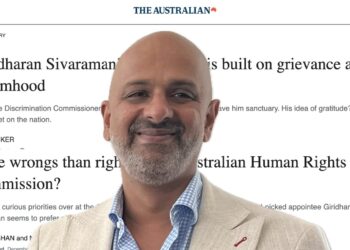Peter Hurley, Victoria University and Melinda Hildebrandt, Victoria University
The Australian government is aiming to rein in the growth of international students in its new migration policy, released on Monday.
This is in response to record levels of international students entering the country once COVID-related border closures were lifted. Current and former international students living in Australia already number 860,000 and are hurtling towards one million people.
As Home Affairs Minister Clare O’Neil told journalists:
[…] we do not want [the international student population] to grow as fast as it has been growing in the past few years.
The government is relying on tightening of visa regulations, greater integrity measures and increased entry requirements to reduce the number of students.
These reforms target the vocational education and training sector and students who remain in Australia following their course. But the number of international students is set to remain about the same, just with more sustainable levels of growth.
Meanwhile, universities – who are so reliant on international student income – are likely to be less affected.
Towards 1 million
Over the past decade, the number of current and international students in Australia has more than doubled. In 2012, there were about 340,000 international students in Australia. The most recent data shows 650,000 are in Australia.
Enrolled international students are just one group of temporary migrants. Some former international students are eligible for post-study work visas of up to six years when they finish their course.
Thanks to border closures, the pandemic caused a major decline in the number of international students living in Australia. To encourage international students to return, the Australian government allowed international students to work more hours and increased post-study visa work rights.
But the rate at which international students have returned has been much quicker than many expected. There have also been several recent reviews into the migration system highlighting problems.
One review found Australia was creating a class of “permanently temporary” migrants in Australia. These are people who have lived in the country for an extended period but have no path to permanent residency or citizenship.
Another review found the migration system, including student visas, was the subject of major abuses.
A targeted clamp down
To lower the growth rate, the government is proposing a series of measures.
These include closing the COVID-related programs that uncapped working hours for international students.
They are also proposing strengthening the integrity and lifting standards in international education. This includes increasing minimum English language requirements for student and graduate visas.
The government is also promising to crack down on unscrupulous education providers who deliver cheap, poor quality courses but offer access to visas with work rights.
To halt the growth in former international students staying on in Australia, the government will shorten graduate visas.
They will also end settings that allow graduates to prolong their stay in Australia by cycling through courses to remain in the country. The number of international students staying in Australia on a second or subsequent student visa grew by more than 30% to more than 150,000 in 2022–23. Students will now need to demonstrate further study is part of career progression.
These are combined with other reforms aimed at making pathways to permanent migration clearer. The government forecast that this package will bring down the growth in net overseas migration.

Universities are set to be spared
This policy is aimed at a major reduction in the rate of growth rather than to reduce the total number of international students.
Of the 860,000 current and former international students in Australia, just under half are currently enrolled in higher education courses. But it is the non-university sector that will be most impacted.
The increase in English language requirements will impact students in the vocational education and training sector, which is dominated by private colleges, as English language requirements for university students are largely unchanged.
Tightening the criteria for enrolments in second and subsequent courses will also impact the vocational sector the most. In 2022–23 almost 69,000 students granted a subsequent student visa in Australia have been in vocational education and training courses where the government claims there is “a lower likelihood of a credible course progression”.
We are not alone
Australia is not the only country winding back post-pandemic policies aimed at boosting international education.
The United Kingdom announced reforms last week aimed at cutting net overseas migration, including restricting some students from bringing family members.
Overall, the Australian government’s aim is to deliver a more cohesive migration strategy that better aligns international education, labour market needs and pathways to permanent residency.
It is a welcome recognition we need significant improvements to Australia’s migration program if we are also going to make improvements to the international student sector.
Peter Hurley, Director, Mitchell Institute, Victoria University and Melinda Hildebrandt, Policy Fellow, Mitchell Institute, Victoria University
This article is republished from The Conversation under a Creative Commons license. Read the original article.











